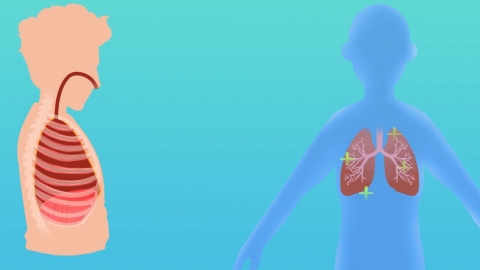How should patients with reduced pulmonary function MEF25 exercise?
Patients with decreased MEF25 lung function should choose exercises based on the principles of low intensity and gradual progression. Suitable activities generally include diaphragmatic breathing training, slow walking, tai chi, stationary cycling, and breathing exercises. Specific details are as follows:

1. Diaphragmatic Breathing Training: Assume a comfortable sitting or lying position, placing one hand on the abdomen and the other on the chest. Inhale slowly through the nose, feeling the abdomen rise while the chest remains still; then exhale slowly through the mouth, drawing the abdomen inward. This exercise strengthens the diaphragm, improves ventilation efficiency, reduces respiratory effort, and can be practiced anytime during daily life.
2. Slow Walking: Choose a flat surface and maintain a pace of 60–80 steps per minute for 15–20 minutes per session. Slow walking is low-intensity, promotes pulmonary blood circulation, enhances cardiopulmonary endurance, and places minimal stress on joints, making it suitable as a foundational exercise to gradually adapt to physical activity.
3. Tai Chi: Practice simplified tai chi forms with slow, continuous movements coordinated with even breathing. The body remains relaxed throughout the exercise, helping regulate breathing rhythm, increase thoracic mobility, improve pulmonary ventilation, and enhance physical coordination—ideal for long-term adherence.
4. Stationary Bicycle Exercise: Use a fixed bicycle with resistance set at a low level, maintaining a pedaling rate of 50–60 revolutions per minute for 10–15 minutes per session. Stationary cycling avoids excessive fatigue while engaging lower limbs to stimulate cardiopulmonary activity, gradually improving cardiopulmonary tolerance.
5. Breathing Exercises: Perform combined movements such as chest expansion, forward bending with breathing, and lateral bending with breathing, coordinating each movement with 2–3 slow breaths. These exercises engage the thorax and respiratory muscles, increase pulmonary ventilation, improve coordination of respiratory muscles, and assist in enhancing overall lung function.
Patients should warm up adequately before exercising. If symptoms such as chest tightness, shortness of breath, or dizziness occur during exercise, they should stop immediately and rest. Exercise intensity and duration should be increased gradually, avoiding sudden vigorous activity.








